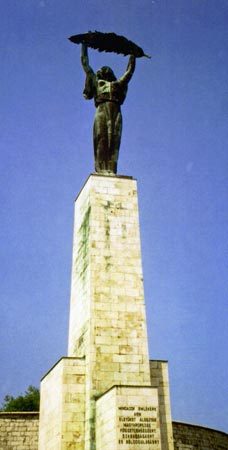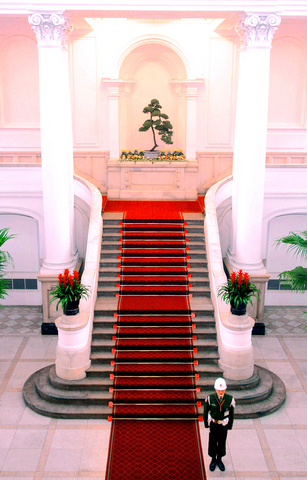For some time now, I’ve been reflecting on the similar situation that Hungary, Estonia and Taiwan face in removing statues dedicated to communism / authoritarianism, but it took Dr. Keating to actually write about it. Finding myself in such agreement, I had to search pretty hard to find ANYTHING to disagree with:
A side issue of the Chiang Kai-shek Memorial [relative to renaming it] is whether to tear down the walls. A few extra gates could be built to ease access, but taking down the walls will serve no great purpose.
The rationale behind the proposal to tear down the walls was to reflect "democratic openness" in keeping with its new name (the Taiwan Democracy Memorial Hall). This initially seemed to me an exercise in overly esoteric symbolism, but a few days later, I changed my mind. Instead of being a serious suggestion, the proposal should be viewed as a diversion (or perhaps an opening bid in a negotiation). I mean, for days afterward, the big story wasn’t "Chiang Kai-Shek Memorial Hall to be renamed", but "KMT vows to defend memorial walls".
Masterful. And if the memorial IS renamed, President Chen ends up looking magnanimous when he says, "OK, you win. The walls can stay."
Aside from that, there’s something Dr. Keating brought up that I wanted to elaborate a bit more upon:
…above Budapest, the Liberty Statue monument prominently stands on Gellert Hill overlooking the city and the Danube River.
This monument too has received its own rectification — a rectification of inscription.
Originally erected in 1947 by the conquering Russians, it used to bear the hypocritical inscription: "Erected by the Hungarian Nation in memory of the liberating Russian heroes." Some liberation!
The Hungarians quickly realized the destructive and oppressive nature of these heroes. In 1956 they rebelled and were severely put down.

(Liberty Statue in Budapest, Hungary. Image from Academic Programs International.)
Dr. Keating didn’t have space in a single newspaper column to flesh out the expression "severely put down". I’ll retell but a single story that readers might not be familiar with:
When the Red Army rolled into Hungary in 1956, their tanks initially took relatively heavy losses against Molotov cocktails. To prevent this, the Soviets did what anyone pupilled in the ethical school of Marx and Lenin would have done: they simply tied Hungarians to their tanks and used them as human shields against the flaming glass projectiles.
Some liberation, indeed. Reckon I wouldn’t judge too harshly Hungarians if they busted a Red Army statue into a couple hundred pieces after hearing that some petty local magistrate wanted to present it as a token of eternal friendship to the Russians.
i-1

